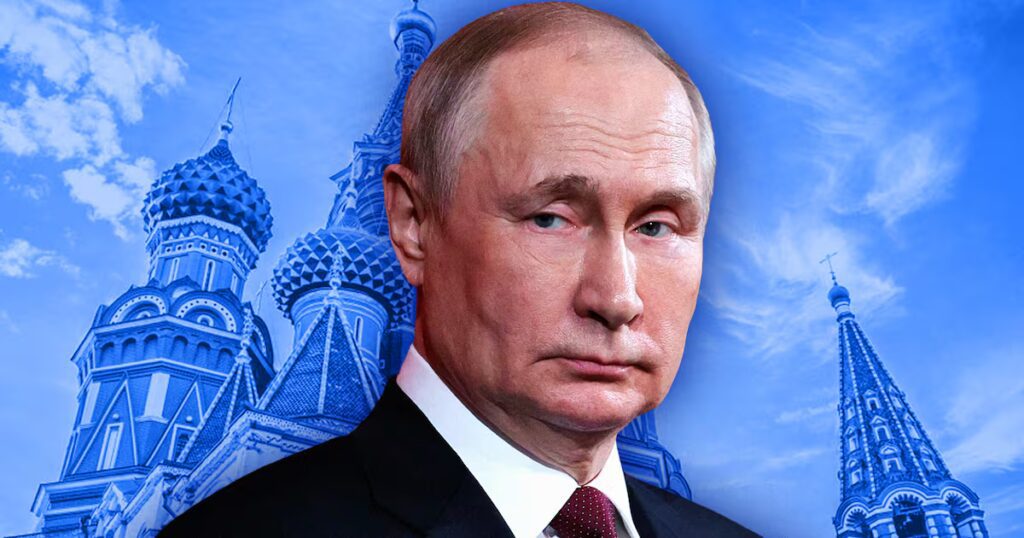- Russia has overtaken the United Kingdom as the top European country in terms of crypto adoption, according to data from Chainalysis.
- Attempts to evade sanctions and hedge against inflation are behind the surge.
- DeFi activity in Russia is now three and a half times larger than it was in mid-2023.
Russia’s invasion of Ukraine fueled rapid adoption of crypto technology within the country’s borders, according to a new study.
Russia is, by far, the largest user of crypto among European countries, according to cryptographic expertise firm Chainalysis.
Russia recorded $379 billion in cryptocurrency inflows between July 2024 and June 2025, a year-over-year increase of more than 48%, the company found. This puts the country ahead of the region’s long-time leader, the United Kingdom, which recorded $273 billion in inflows, a relatively modest 32% increase from the previous year.
“I strongly believe that the growth and adoption of crypto assets in Russia has been driven by war and sanctions regimes,” said Matthias Bauer-Langgartner, head of European policy at Chainalysis. DL News.
“Crypto assets are not used simply to evade sanctions. There is a real strategy, a long-term strategy behind them.”
Evasion tactics
The effect of the war on the use of cryptocurrencies with Russia is twofold. First, the Russian government has turned to digital currencies in order to circumvent international sanctions, which have limited the country’s access to U.S. dollars and global payment systems such as SWIFT.
Second, these sanctions have hit the ruble and Russians, tired of inflation, are turning to crypto and DeFi in order to protect their economies, according to Bauer-Langgartner.
Russia is the subject of a record 19 sanctions from the European Union. The most recent, released in September, targets Russia’s use of cryptography.
“As evasion tactics become more sophisticated, our sanctions will adapt to stay ahead of the curve,” European Commission President Ursula von der Leyen said in a statement last month.
“Therefore, for the first time, our restrictive measures will hit crypto platforms and ban transactions in cryptocurrencies.”
In 2024, Russian lawmakers legalized the use of cryptocurrencies for international payments. A month later, President Vladimir Putin signed a law legalizing cryptocurrency mining.
“Putin is now a staunch defender of cryptocurrencies,” the Rand think tank noted in a recent report. “At the annual Russia Calling investment forum in December, he claimed that ‘no one can ban the use of Bitcoin’.”
The report cites several examples of Russia’s new affinity for crypto, including an alleged scheme in which Rosatom, a state-owned nuclear technology company, allegedly laundered more than half a billion dollars in stablecoins for Russian clients who were trying to evade U.S. sanctions and acquire “sensitive U.S. technologies.”
Indeed, transfers over $10 million increased by 86% in Russia, according to Chainalysis data. This is double the 44% growth the company recorded in the rest of Europe during the same period.
Russia’s adoption of DeFi
Even though Russian businesses are increasingly using crypto for international payments, its use is banned in Russia.
“The Russian government is actually not very supportive of crypto adoption among the population as a whole, because it is something that can hardly be controlled,” Bauer-Langgartner said.
That hasn’t stopped ordinary Russians from turning to digital assets to protect their economies.
Although inflation has slowed this year, it has remained high at 8.2%, the Russian central bank said in September.
“Because of this ban, we can see a lot of growth in DeFi, where people are moving to KYC-free exchanges, peer-to-peer platforms or so-called instant exchanges, where they can quite easily link their sanctioned Russian bank account to a crypto trading platform,” Bauer-Langgartner said.
DeFi activity is now three and a half times larger than it was in mid-2023, according to data from Chainalysis.
Despite the ban on retail use of crypto, Bauer-Langgartner believes the Russian government has largely turned a blind eye to Russian use of tools like instant swaps.
“It’s not a high priority among the many things the Russian government is thinking about right now,” he said. “The application could be further strengthened, and potentially will be in the future. »
This month, however, Russian Deputy Finance Minister Ivan Chebeskov appeared to suggest that the Russian government should take steps to facilitate retail crypto use.
“We have millions of citizens, by some estimates 20 million, who use cryptocurrency for various purposes,” he said, according to a report by Russian news agency Tass.
“As they are already using it, we need our own infrastructure to protect citizens and gain economic and technological benefits.”
To be sure, crypto remains a small part of Russia’s efforts to circumvent sanctions.
According to Bauer-Langgartner, crypto assets are not liquid enough to fuel one of the world’s largest economies. Additionally, they are easily traceable, allowing centralized stablecoin issuers to freeze suspicious funds at the request of US and European law enforcement.
“The analytical capabilities that we have and are constantly developing have a massive effect on the availability of sanctions-exposed funds,” he said.
“The regulations in Europe and the United States work because they give you a narrower net and a real barrier to bringing in funds from Russia.”
Aleks Gilbert is DL News’ DeFi correspondent based in New York. You can contact him at aleks@dlnews.com.




